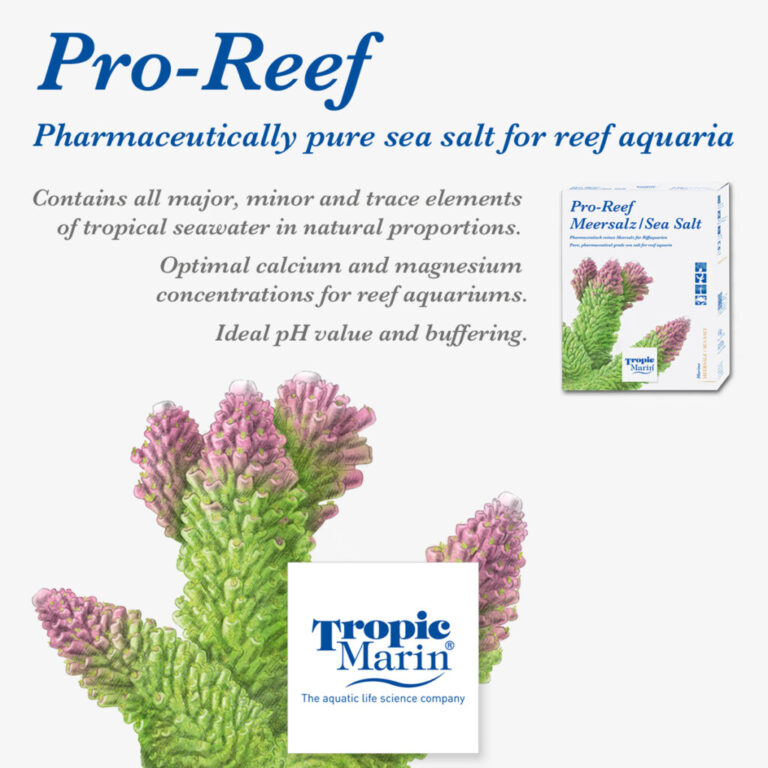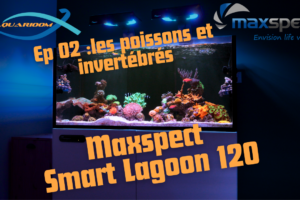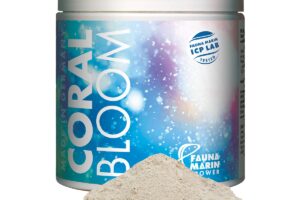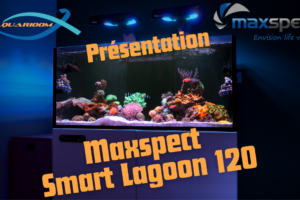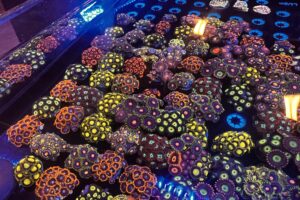Starting a reef tank : obligatory hardware and considerations
Getting into the reefkeeping hobby is not always easy. What is absolutely necessary ? What is extra ? What are these products for ?
Here is a first article explaining what is obligatory for a first step in our hobby. We will explore in incoming articles other hardwares to improve this first basic setup, and more advanced hardwares to go further in the reefkeeping experience.
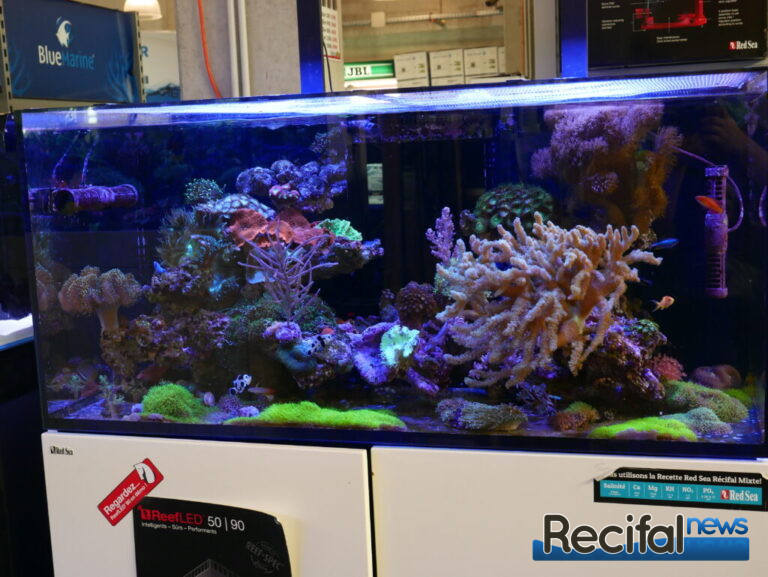
Sponsored article by :
A tank
It is obvious, to start a tank, you need a tank. But which one ? Here are some points to think about : shape, size, filtration type, glass quality.
Its shape
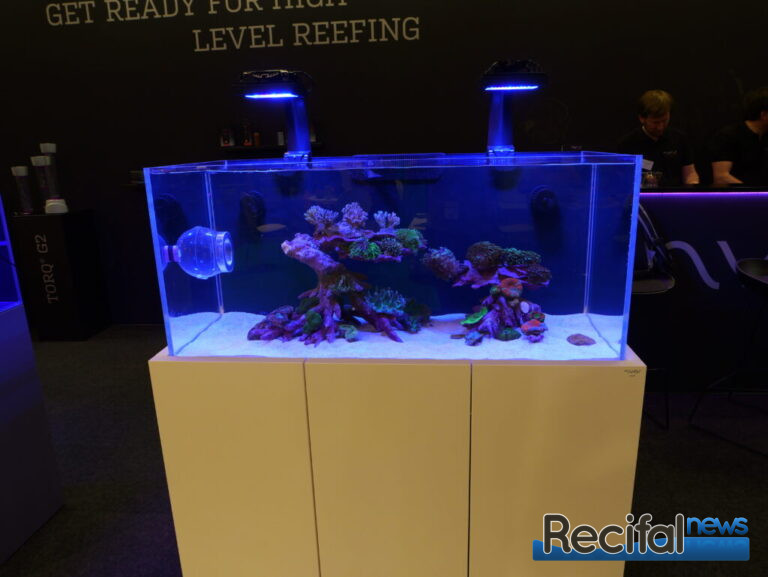
- The most common tanks are rectangular-shaped. It is recommended to chose wider tanks than higher ones. Bigger depth makes the scaping easier and it will look more harmonious. Tank with greater height often leads to stacking rocks more than creating a nice scape.
Shallow tanks are trendy. They are characterised by great depth and low height, with a ratio of 2:1 for example. They allow a nice view over the reef and with their surface. You can create nice setups and put a lot of corals.
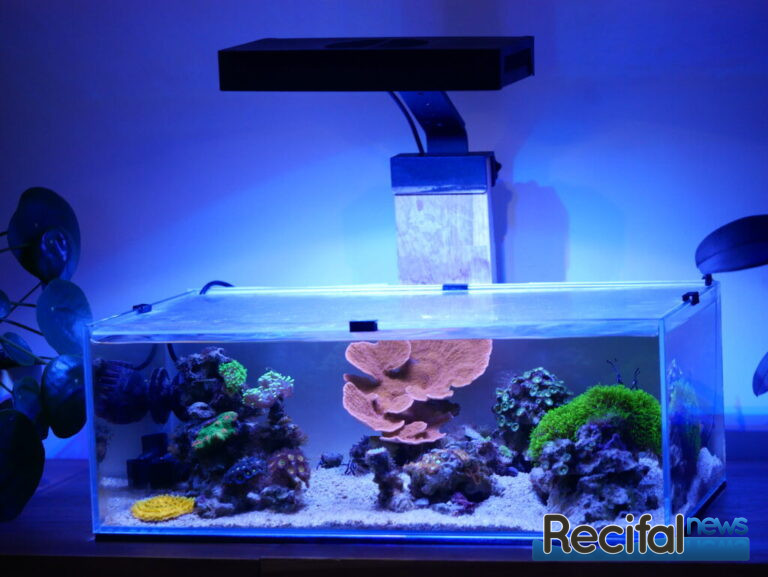
Another type of rectangular tank : the « peninsula » or « room divider » tank. They have 3 clear faces with filtration / overflow on one lateral glass. It can split a room into 2 spaces and is enjoyable from 3 sides.
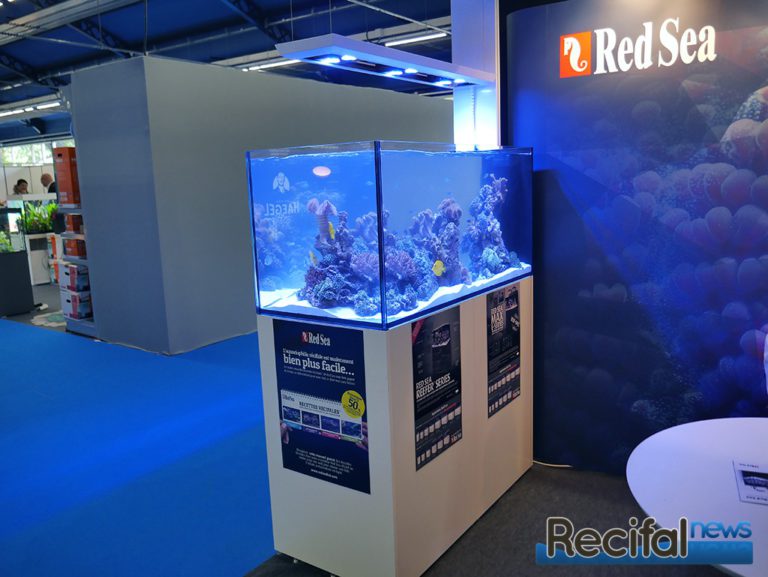
- Cubic tanks are also common, mostly in nano size with several brands selling 20 to 90 L square tanks. The challenge is to create a central scape reaching approximately 2/3 of the height but letting enough space around it to clean the glass and for corals growth. Cubic shape limits also fish choice. Some species require long swimming area.
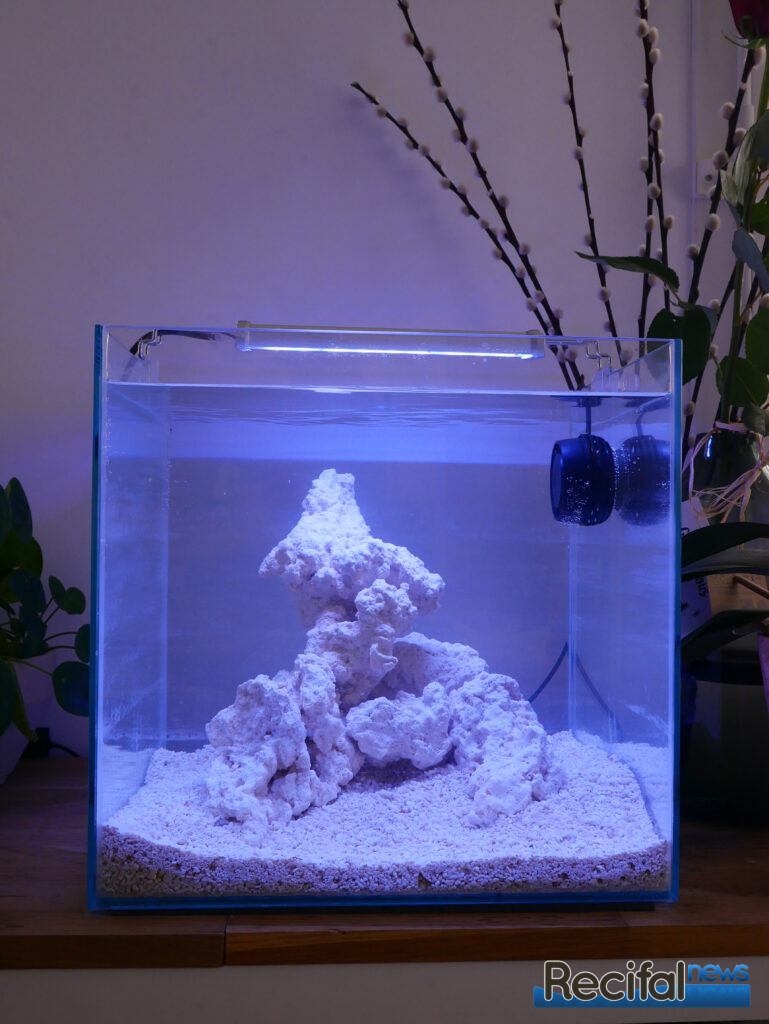
Some tanks have a rounded glass. It doesn’t really affect the fish and corals. But it is good to know that it modifies the optical properties of the glass. So, depending on the angle you look at the tank, the distance and the angle of the curve, you will see distorsion.
Tank size
Now you chose the shape of the tank, let us think about its size. Three factors are determinant : your total budget, the space you want to allow, and species you want to keep.
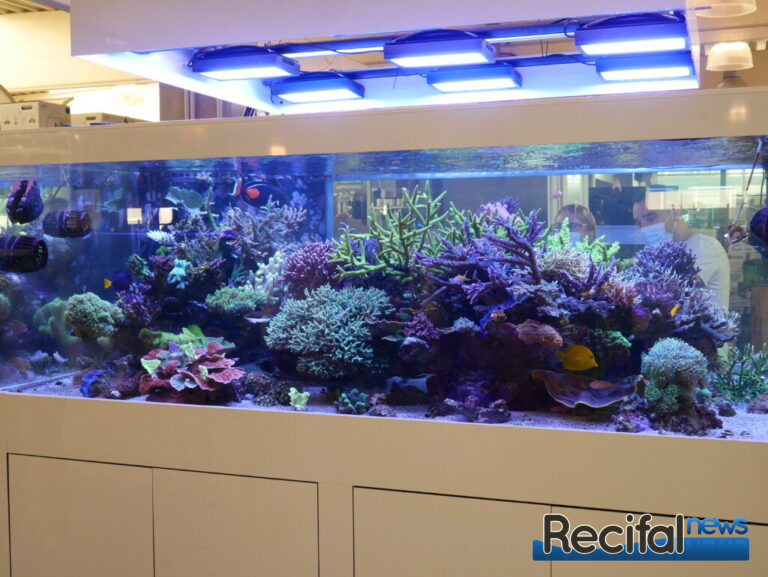
- First of all : the money, you better have to anticipate this part. Who says bigger, means more expansive, for the tank itself, but also all the stuff around it. It is wiser to chose a smaller tank and be able to afford a correct equipment and be able to assume the long-term maintenance cost than aiming too big. We see a lot of people stopping their tank because they started with an unsuitable equipment due to financial compromise. You have to consider the cost of the tank, the furniture, the equipment, the electricity and water bills, and consumable supplies. Increasing a bit the area of the tank can lead to the necessity of buying 2 lights instead of 1 for example.
- Second thought about the size of the tank : the space it requires. Whether you chose a rectangular, cubic, shallow or peninsula tank, it does not integrate the same way into your home. In any case, don’t place it too close of a direct light source : it can leads to unwanted algae outbreaks. Also, a too big or too small tank won’t have the same visual impact. To avoid this, you can use duct tape, styrofoam or cardboard to simulate the place it will take. Let a 5 to 10 cm space between the tank and the wall for an easy cable management. Also, think at having a power outlet near the tank.
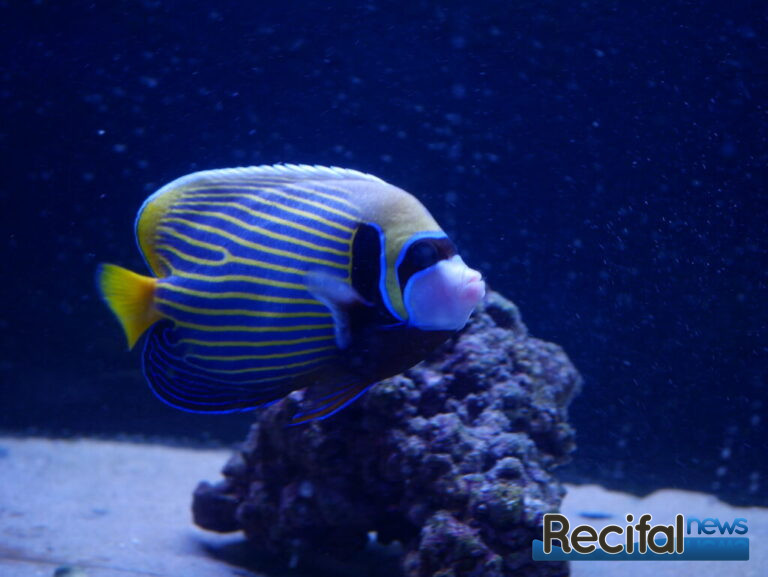
- Last important criteria about the size of the tank : the population choice. All fish and corals are not suitable for any size of tank. Some species like wrasses, surgeonfish, butterflyfish, angelfish are hyperactive swimmers. They really need volume and swim lane to feel good.
If your project is about the desire to keep absolutely one or several species, learn about their needs. If you can offer them these conditions, let’s go.
The reverse way of thinking is also possible. If you don’t have any shortlist, setup the tank according to your budget and the space you want to allow to the tank, and then chose corals and fish species that can be reasonably kept in your tank.
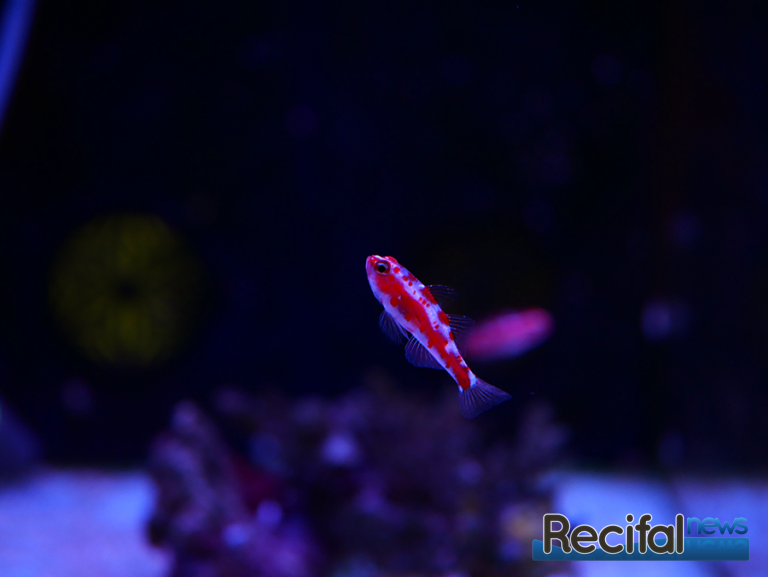
In other hand, some « nano species » won’t have their place in too big tanks. For example, small and shy gobies like Lotilia graciliosa, Discordipinna griessingeri, Gobiodon, Eviota, Trimma… In big tanks, they won’t find their food with too impressive tankmates and you will barely see them. Nowadays, we have the knowledge and technical solutions to create really nice nano setups that are longterm viable. The drawback ? Be consistent in the maintenance. But, finally, you also need to be for bigger tanks ! It has never been easier to make a 30 to 100 L reef tank. With the suitable equipment, a « keep-it-simple » and regular maintenance, an appropriate population and it will be pure pleasure. It can also be less scary when you don’t have to manage a big amount of technical hardware.
If we generally think at fish when we speak about tank size, it is also the case for some corals and invertebrates. Indeed, some species can be quickly too big, and their maintenance in small tanks are not recommended. For example, Acanthophyllia, Trachyphyllia, Catalaphyllia, Heliofungia inflate their tissues and become huge. Some species are also aggressive with their neighbours like Plerogyra, Echinopora, Pectinia, Galaxea. They have stinging filaments they deploy in the night or when they smell food in the water. They also use them to burn the corals around them to colonise the substrate.
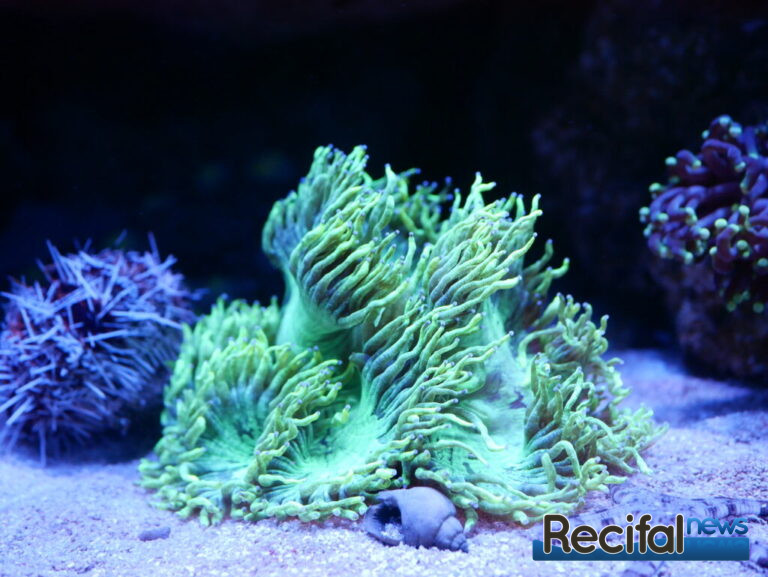
Other considerations
In addition to the shape and the volume of the tanks, other criteria can be discussed.
First of all, the type of filtration. Most of the reef tanks bigger than 150L have a sump. It is a filtration tank, below the display tank, that allows to hide technical hardwares like protein skimmer, mechanical filtration, heater…
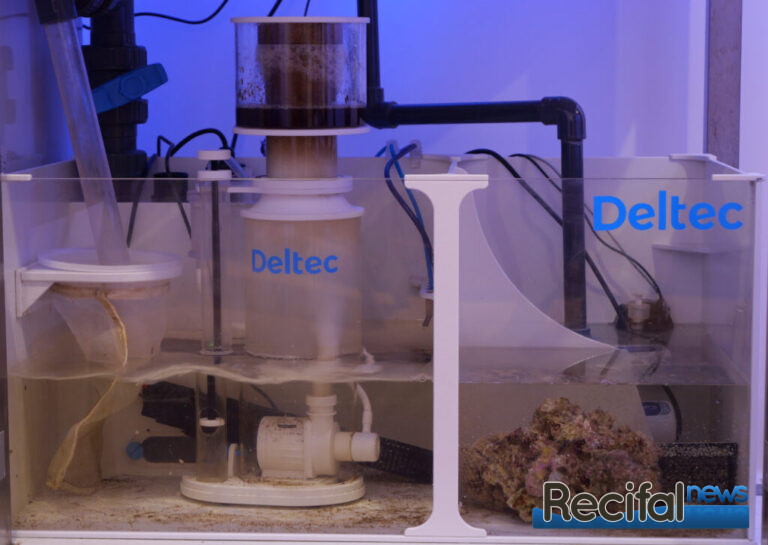
It implies that space below the tank is dedicated to its filtration.
Alternatively, smaller tanks don’t have any filtration compartment, or a hidden one, in the back. They are called « All-in-one » tanks (AIO). A black glass divides the display tank and the filtration compartment. They imply an easier water management, and they can sit on any sturdy enough piece of furniture.
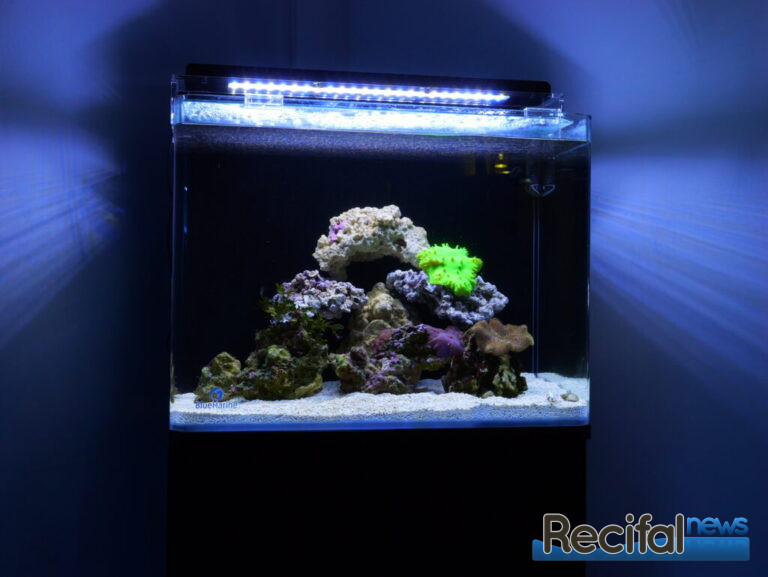
Last criteria we will talk about here : glass and silicon seal quality. You can find on the market « Crystal clear », « star fire », « ultra white » glass. These terms mean that the glass has lower iron concentration, making it more transparent, less « greenish ». It is clearly noticeable when you look on the thickness of the glass. It is more expensive, but reduces the colour alteration when you look through the glass. The general visual appearance is brighter. It is emphasised by the silicon seal quality. A sleek really transparent silicon finition makes the visual experience totale. Having black silicon is a matter of taste, but is a good choice with a black background.
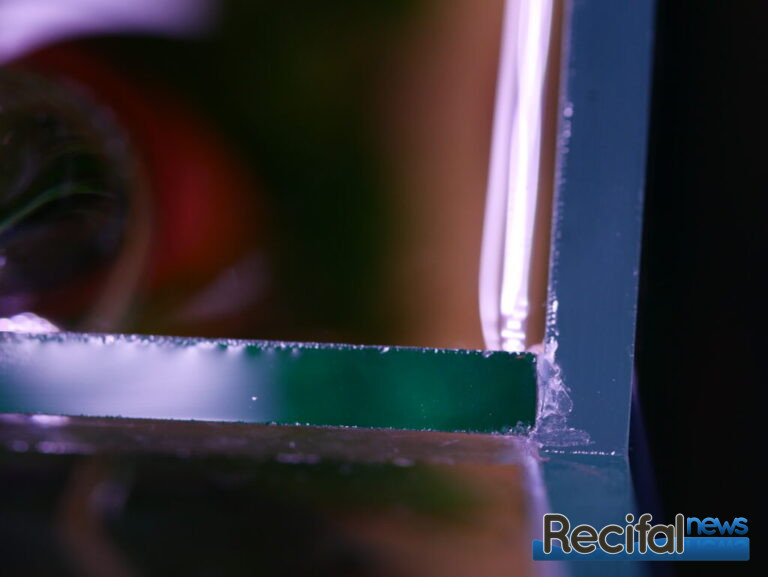
The cabinet
To display a tank, you need a safe and sturdy cabinet. Bigger tanks are often sold with a dedicated one, generally in waterproofed plywood. For custom-made tank, you can choose a stainless steel frame on which you add finish panels of your choice (wood, acrylic, alu-dibond…).
Smaller tanks can be placed on any piece of furniture of your home decor if it can bear its total weight (glass, sand, rocks, water). The tank will be part of the ambiance of your home on a rustic buffet, a desk or a dresser.
Please check the leveling and put a foam mat between the tank and the cabinet. You have also to think at having a space in the cabinet or next to it to put controllers, power supplies and multi-socket.
Heater
Most of species we keep in reeftanks need a 23 to 26°C water temperature. For this, a heater is generally needed, according to the room temperature. You can choose between preset heater (you can’t change the target temperature, usually 25°C), a adjustable heater or a pack with a heater and a controller (thermostat).
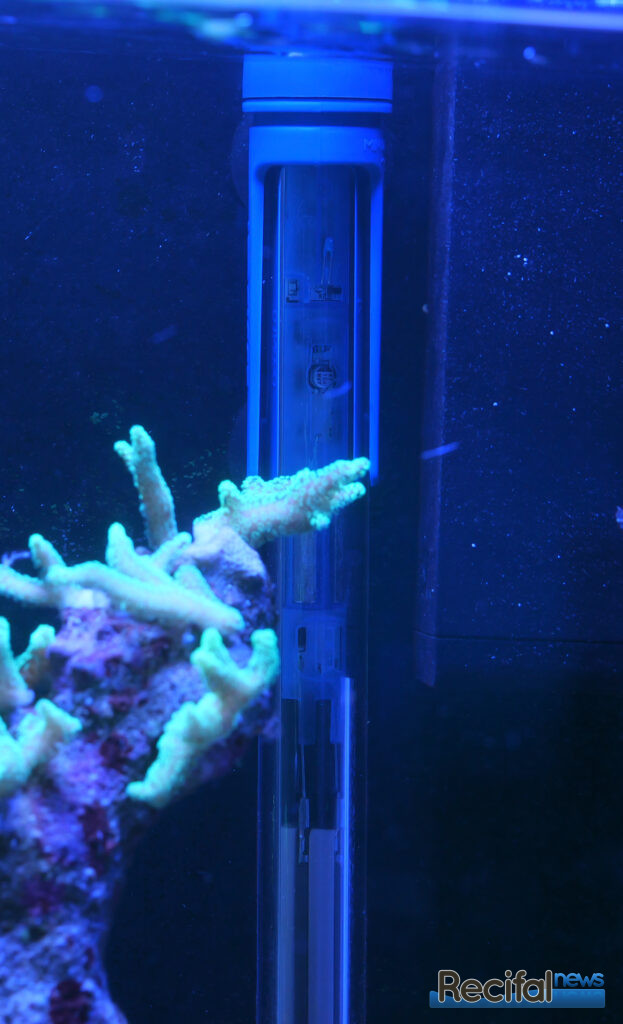
We highly advise to chose for a proven brand heater rather than a cheap one. We can often see tank crash due to failing heater. Check daily the temperature when you feed your fish.
Light
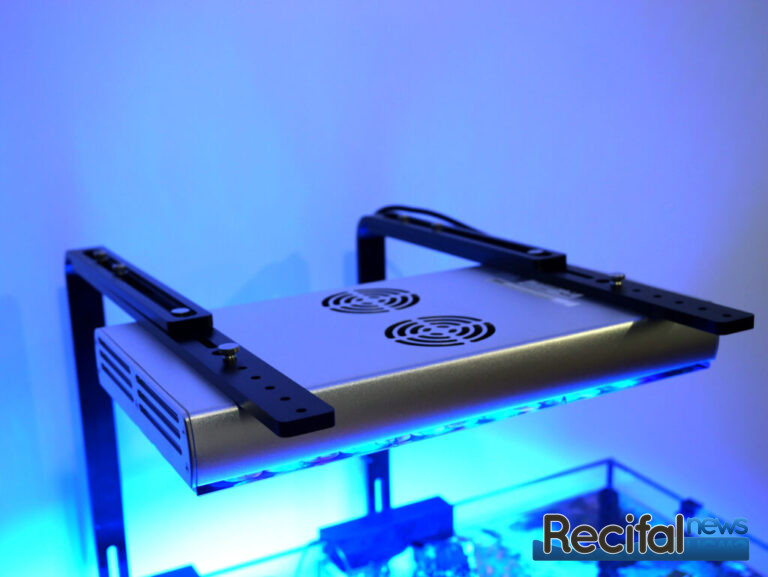
Light is essential for life in the tank. First, to instaure a day/night cycle that is important for fish and corals. It is also vital for corals. Indeed, they have thousands of symbiotic algae in their tissue. They use light to provide vital energy and food to corals.
Nowadays, LED lights are the reference. They are powerful with lower energy consumption. You can also dim them to adjust smoothly the light to your corals needs thanks to an increasing LED colour diversity.
Pumps
Other vital element in the tank : water movement. Corals find their food in water, and also excrete their metabolic waste in it. So water renewal around them is crucial. Plus, water movement at the surface of the tank ensures oxygenation.
For this, we use two kinds of water pumps :
- Return/Circulation pumps : they create water circulation between filtration compartment / sump and display tank. We generally advise a flow of 4 to 10 times the volume of the tank per hour. We call it the « turnover flow ». For example, a 1 200 to 3 000 L/h pump is enough for a 300 liters tank. There are DC pumps : you can adjust their flow with a controller or a mobile device app.
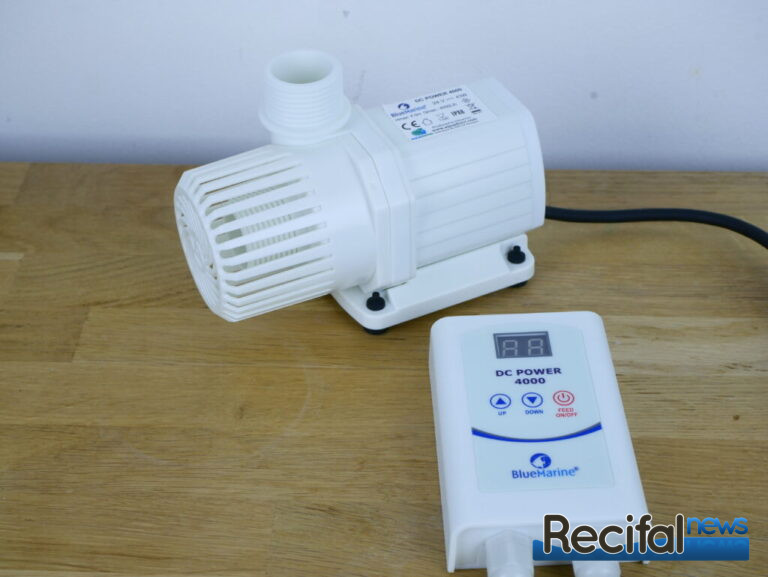
A DC return pump
- Wavemakers : in the display tank, they create a general flow to remove detritus and bring water with minerals and food to corals.
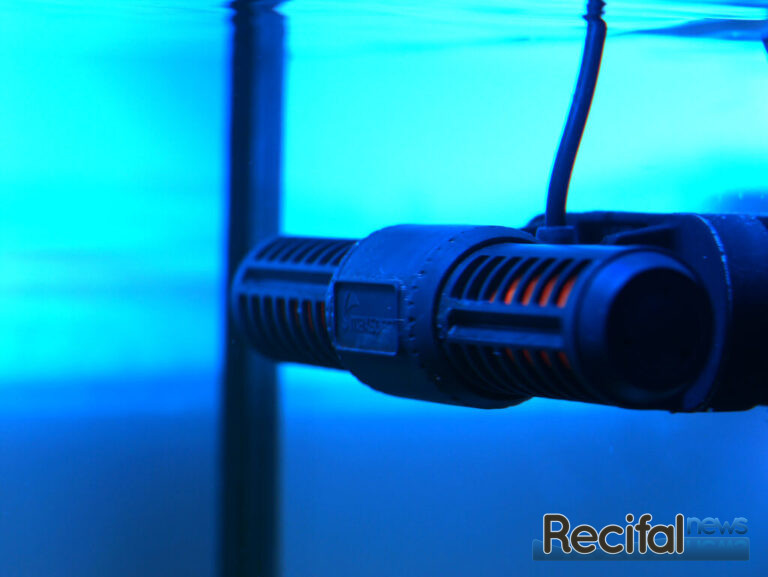
Total flow depends on which coral species you want to have. Soft corals and Large Polyp Stony corals (LPS) thrive in low to medium flow. A total flow of 10 to 20 times the tank volume per hour is generally considered as enough for them. Short Polyp Stony corals (SPS) require higher flow, generally 20-40 times the volume of the tank per hour. Species that lives in exposed reefs can require a 40 to 60 times the volume of the tank per hour.
These values are general, and depend on the number of wavemakers, their spot, the scape…
First main rule : don’t create laminar water flow. It is too shearing and won’t let the corals deploy their polyps and inflate their tissue.
Second main rule : multiply smaller wavemakers is better than having one oversized. You reduce the chance to create dead spots where sediments build up, leading to water pollution.
Third main rule : avoid consistency and regularity. DC wavemakers are great to create random and variable flow. With short pulses, long pulses, random flow, wave patterns… you can create really nice general water movement. Don’t forget that in the wild, flow is ruled by moon cycle with high and low tides and 6 hours cycles.
Water
A reeftank without water is less funny ! A successful reeftank is possible only with high quality water. For this, we use reverse osmosis water and salt mixes that bring minerals in preferential ratios for corals health. The proportion of each element really matters for corals, fish and invertebrates. Use a hydrometer, calibrated refractometer or salinity probe.
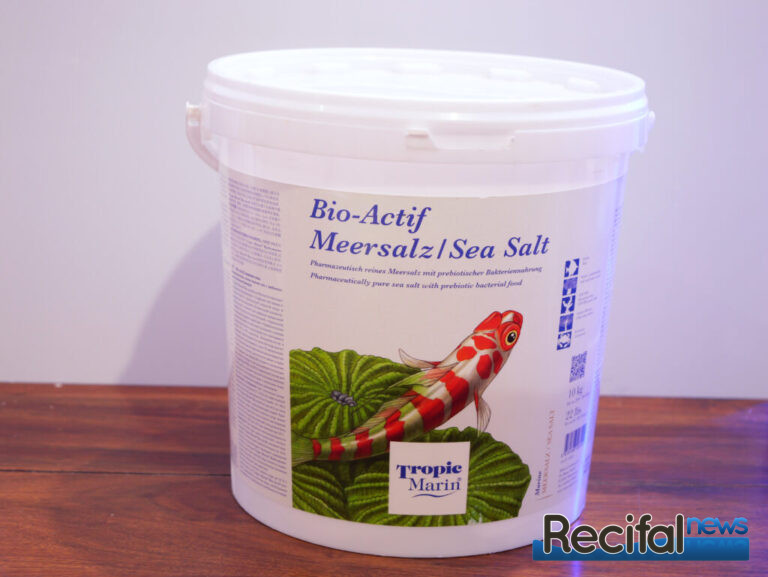
Reverse osmosis water can be bought in local fish stores, but you can produce it at home with a reverse osmosis device. It filters your tap water and purify it. You only have to change regularly the several filtration cartridges and membrane when they are saturated.
A good way to check it is to have a TDS-meter, giving you the conductivity of water. When it reaches 0, your water is pure.
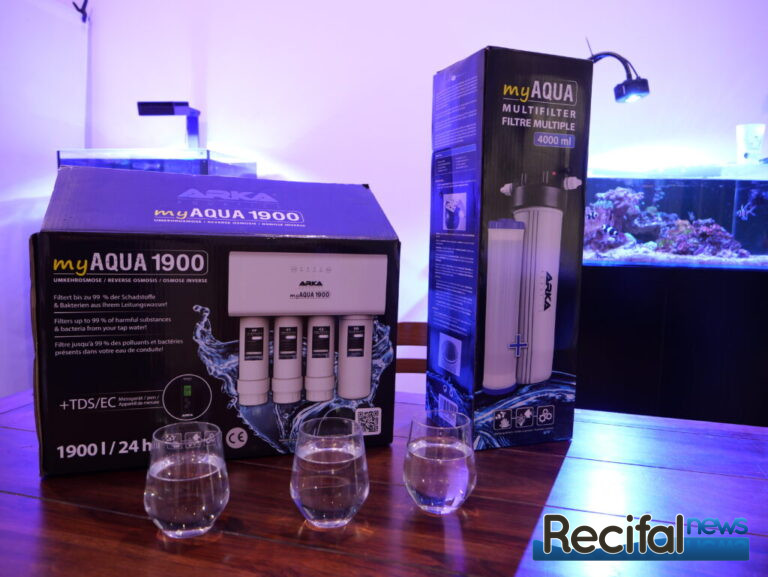
Scaping
A basic scape is needed to have a nice tank.
On the bottom, only coral sand is recommended, or nothing – it is called « bare bottom tank ». You can find it in several grain size. We recommend a 1 to 3 mm one. To keep it clean you will have to add snails, starfish, sea cucumber – what we call the « clean up crew ». They eat excess food, detritus and algae that build up on and in the sand layer. Some fish also help like wrasses and gobies. Sand is also required for some species : Macropharyngodon or Halichoeres wrasses sleep in it. Mandarinfish and gobies find their microscopic food in the sand. Pistol shrimp and gobie symbiosis also requires sand to build a burrow.
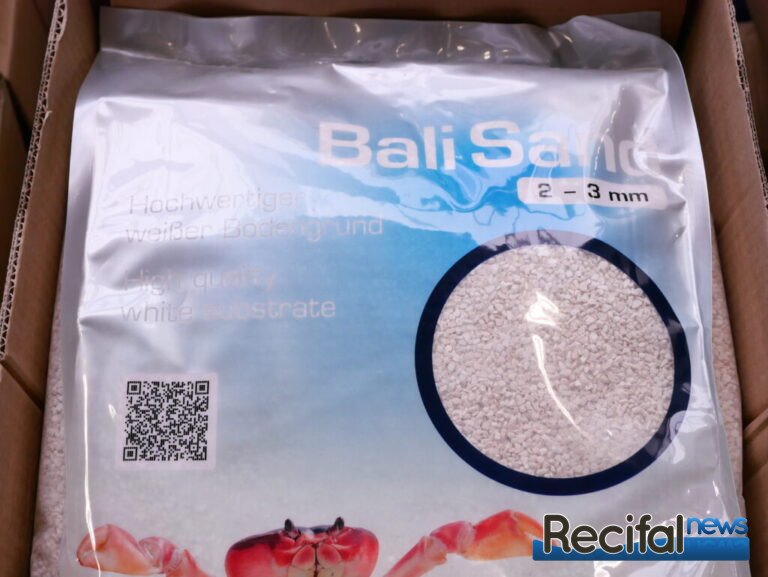
Sand is also a filtration compartment. Bacteria colonies build up in it and decompose pollution.
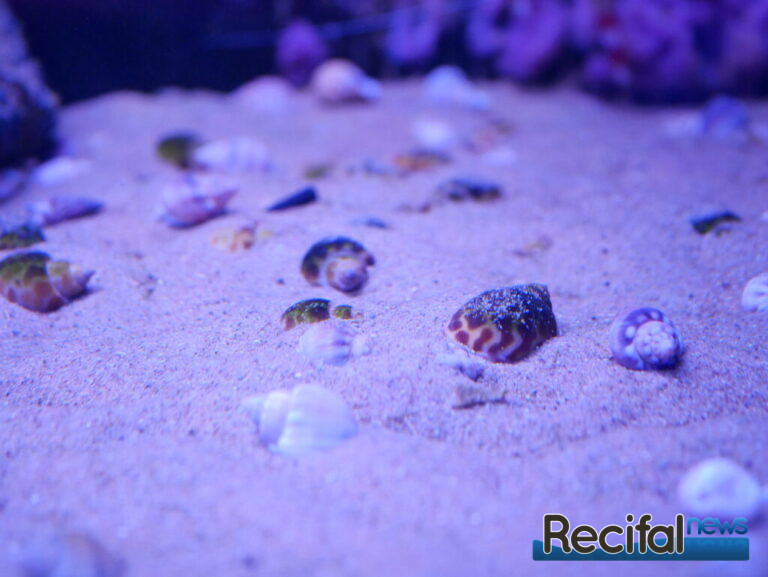
To create a reef, you need rocks. There are liverocks and substitutes.
Liverocks are collected in specific area. They are full of lifeforms : bacteria, algae, worms, snails, crustaceans… that play a role in the ecosystem you try to build up. This biodiversity is essential to maintain the tank stable.
Substitute rocks are good alternative, they are either in ceramic or rocks of quarries that were reefs in prehistoric times. Using them implies adding nitrifying bacteria strains, and other microscopic species will come when you will add fish and corals.
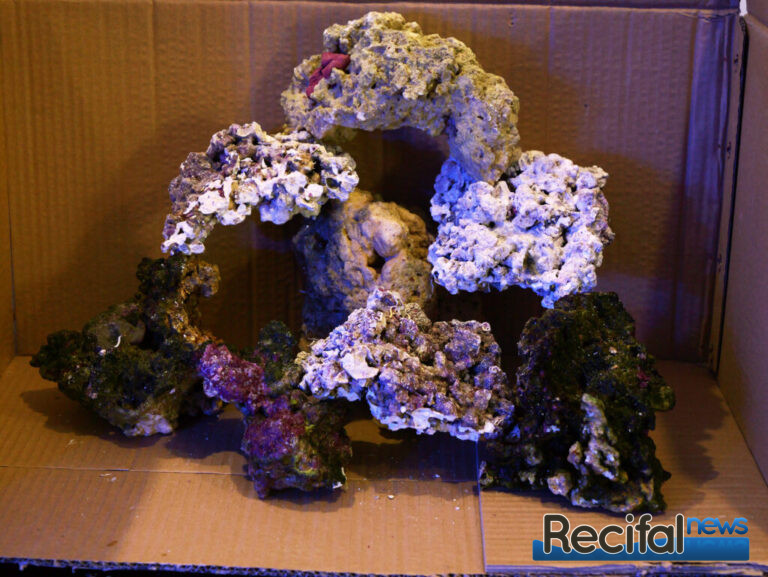
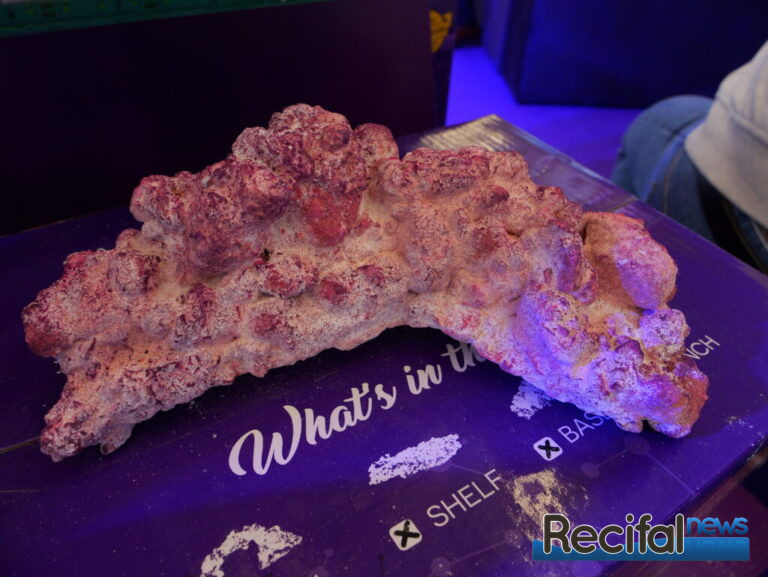
Create an « aerated » scape, allowing water flow between rocks and creating spots where you can glue corals. Keep in mind that corals grow, but you will need to clean the glass too.
Consumables and basic accessories
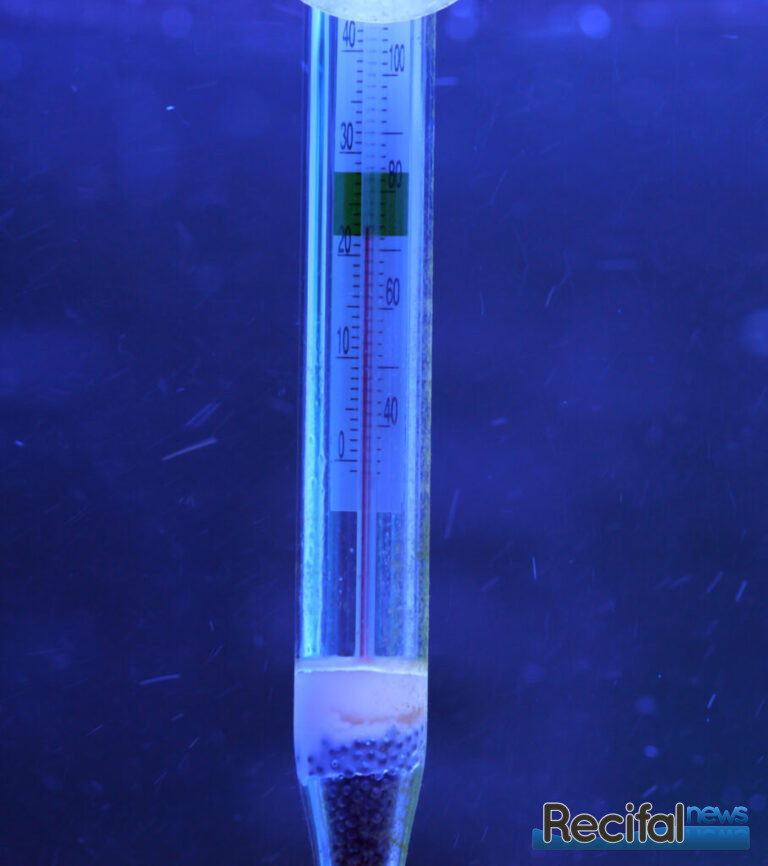
As mentioned in the paragraph about heater, it is good to keep a thermometer in sight.
Already mentioned too : the aerometer / hydrometer to guaranty good water preparation and evaporation compensation.
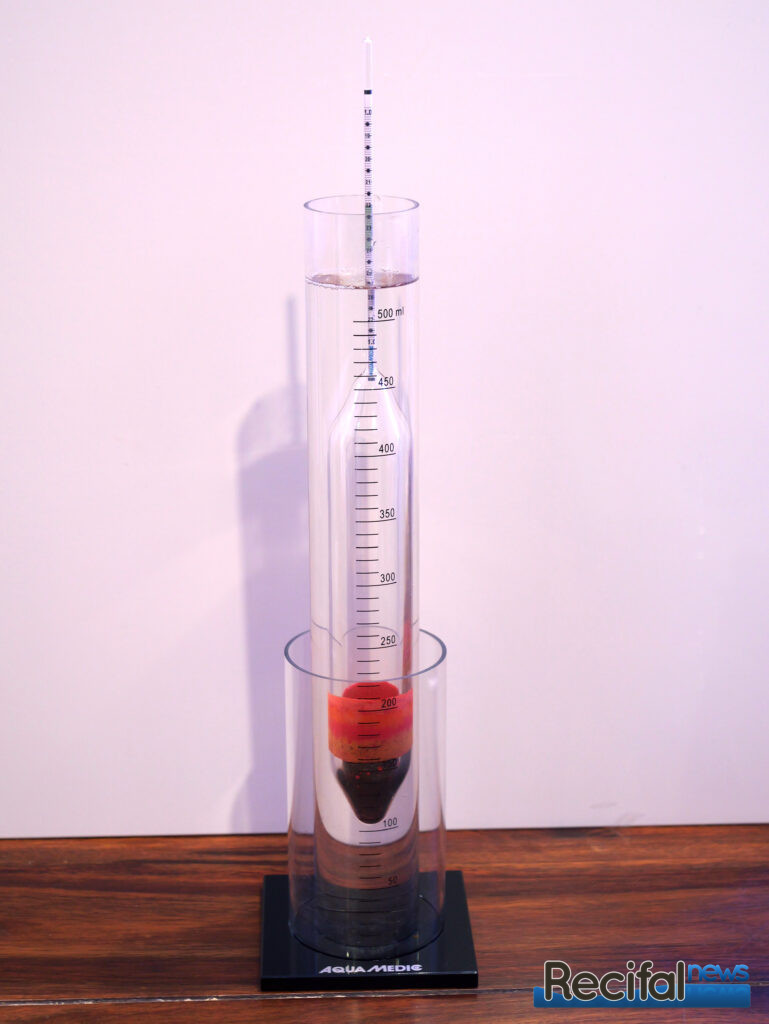
To conclude, water tests kits for basic parameters. They usually contain reagents, syringues, vials and either a colour scale or a result board. First elements to test : nutrients with nitrates (NO3) and phosphates (PO4). They are nutrients but also pollutants, so it is important to keep them in good concentrations.
Also, major corals skeleton that are calcium (Ca), carbonats with KH/alkalinity tests and Magnesium (Mg).
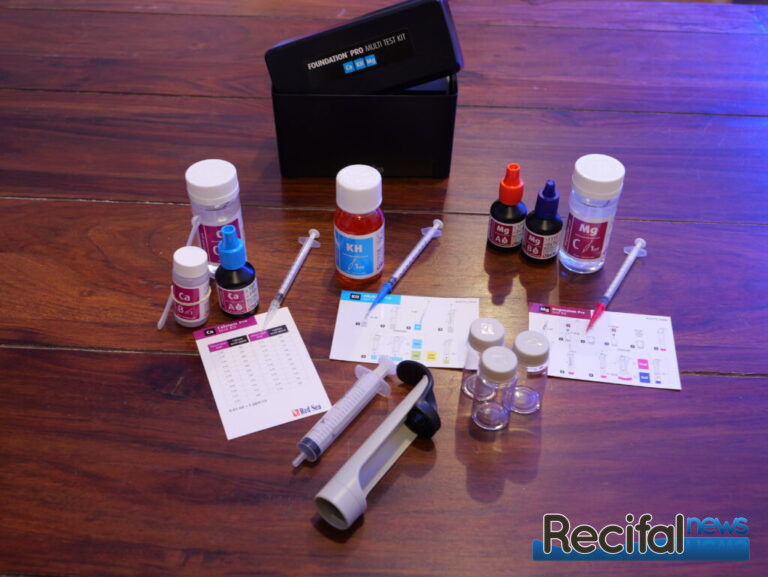
To sum it up, you absolutely need :
| Equipment | Note |
| A tank | The size according to budget/population project |
| A cabinet | Mind the total weight |
| A heater | 23 to 26°C |
| A light | Made for reeftank, LED |
| Return/circulation pump | 4-10 times the volume of the tank per hour |
| Wavemakers | 10-40 times the volume of the tank per hour, according to the corals you keep. DC pumps recommended |
| Sand | Coral sand only, <3 mm |
| Rocks | Liverocks or substitute, avoid dead spots |
| Salt | Special sea water salt mixes |
| Reverse Osmosis water | Buy it in local fish store or buy a Reverse osmosis device |
| Test kits | NO3, PO4, Ca, MG, KH |
| Aerometer/hydrometer | Clean it after each use |
| Thermometer/Thermostat | Check regularly the temperature |
You are now ready to start the adventure. Follow us to discover old and new files, and reading good books of experienced authors is never too much to enjoy reefkeeping.

